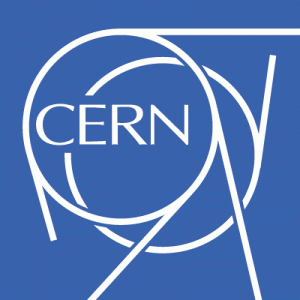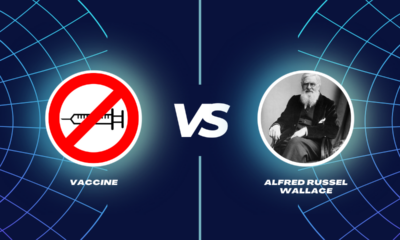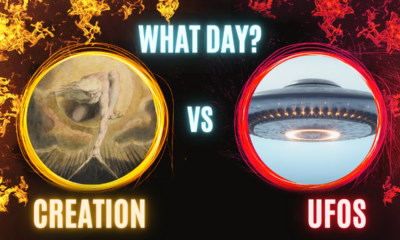Creation Corner
Speed of light exceeded?

A team of atomic scientists may have observed matter traveling faster than the speed of light. If true, that finding changes everything.
The finding
The team at the European Organization for Nuclear Research (CERN) ran a joint experiment with the Gran Sasso laboratory in Italy. The CERN team fired 15,000 beams of neutrinos toward Gran Sasso, 500 miles away. The neutrinos reached Gran Sasso 60 nanoseconds faster than they should have.
To put that in perspective, 500 miles is about 2.4 light-milliseconds away. Compared to this, 60 nanoseconds is one part in 250 thousand.
That might not seem significant. To prove this finding, the ones measuring the time must be exquisitely precise. Scientists who ran an earlier experiment of that kind at Fermilab in Chicago got a finding like this—but had to reject it. The reason? They could not measure time precisely enough, so the finding was well within the margin for error. The Fermilab team will now repeat their experiment, with clocks precise enough to measure time differences on the order of one part in 250 thousand—or less.
If that experiment—and another experiment in Japan—yield the same result, it would mean that the neutrino—a particle of matter—exceeds the speed of light.
Definition of the speed of light
The speed of light in a vacuum is the speed of any electromagnetic wave. James Clerk Maxwell first worked out the equation that gives the speed of light. The problem: that speed depends only on two other constants that describe the electrical and magnetic properties of a vacuum (or of whatever other medium light might travel through). That speed does not depend on the frame of reference of the light.
For decades since Maxwell wrote his paper, scientists wondered what frame of reference was appropriate for the speed of light. Would it be the lamp? The eye of the beholder? Or some absolute medium in space—the aether, as men once called it? In 1905, Albert Einstein said that if the speed of light did not depend on frames of reference, then it was the same in all frames of reference. So Einstein gave the speed of light its trademark symbol: c, for constant.
What a constant speed of light means
This implies that whether the lamp is keeping the same distance from the beholder, or moving toward or away from him, does not matter. The speed of light is the same. That makes little difference on the scale of ordinary events. But if, say, a train moved toward a grade crossing at an impossible speed, then the light from its headlight would move at the same speed as the light from any track signal that it passed. That would be equally true for the engineer as for anyone walking along the track.
So if the speed of light is the same, then time, length and mass are not the same, at least not along the way that the train is moving. To any stationmaster that the train passed, the train would be shorter when in motion than when stopped. The engineer’s clock would also run more slowly than the stationmaster’s clock, and the train would also be noticeably heavier. If the train were ever to run at the speed of light, then it would be flatter than a pancake, the engineer’s clock would stop completely, and it would be infinitely heavy.
Einstein, in working out his Special Theory of Relativity, looked at it another way. The only thing that could travel at the speed of light would be an object with no proper mass, something that could never exist at rest. Only light, and maybe neutrinos, would qualify.
Neutrinos are the fastest particles of matter known to man. No one has ever seen a neutrino seeming to approach with a left-handed spin. That’s because nothing can ever catch up to a neutrino. So if any particle could fly at the speed of light, neutrinos would.
The CERN/Gran Sasso finding means that neutrinos have flown faster than light. So in theory, the neutrinos have reached their targets before anyone standing near them could watch anyone fire the guns that sent the neutrinos on their way. And this assumes that the space between the guns and the targets were a vacuum!
What faster-than-light travel means
If the CERN findings are correct, then either:
- Neutrinos do not slow down in a gravity field, as light does. (Einstein predicted that later, and other scientists confirmed it.) Or:
- Mankind’s understanding of the universe is incomplete.
The Special and General Theories of Relativity have held up too well for scientists to throw them out completely now. But they might have to regard relativity as a special case, one that works well only on the scale of experience on earth, and in the solar system. (The finding might have a practical use: a new form of communication that would let rocket-probe controllers send orders out to their probes, and get data back, faster. Even an interstellar mission would be more feasible than before.)
This could mean that every model of the cosmos, and its origin, is more flawed even than creation scientists have long suspected. This goes beyond the invention of the concepts “dark matter” and “dark energy” to save the Big Bang theory. If neutrinos in particular fly faster than light, then astronomers must start now to observe of incoming neutrinos, to make more accurate maps of the far reaches of space. Even that will not stop a career-breaking controversy perhaps as bitter as the trial of Galileo.
[amazon_carousel widget_type=”ASINList” width=”500″ height=”250″ title=”” market_place=”US” shuffle_products=”True” show_border=”False” asin=”1878026097, 0890515077, 0310234697, 0875523382, 0890511586, B002RBHDFK, 0949906689, 0890513600, 089051416X, 0890515050″ /]
Terry A. Hurlbut has been a student of politics, philosophy, and science for more than 35 years. He is a graduate of Yale College and has served as a physician-level laboratory administrator in a 250-bed community hospital. He also is a serious student of the Bible, is conversant in its two primary original languages, and has followed the creation-science movement closely since 1993.
-

 Education2 days ago
Education2 days ago‘Grading for Equity’: Promoting Students by Banning Grades of Zero and Leaving No Class Cut-Ups Behind
-

 Civilization4 days ago
Civilization4 days agoEarth Day Should Celebrate U.S. Progress & Innovation
-

 Family2 days ago
Family2 days agoIdaho defends against abortion mandate
-

 Civilization3 days ago
Civilization3 days agoNewsom plays silly abortion politics
-

 Education4 days ago
Education4 days agoThe Intifada Comes to America. Now What?
-

 Civilization4 days ago
Civilization4 days agoEarth Day – part of cultural Marxism
-

 Civilization3 days ago
Civilization3 days agoWaste of the Day: China Still Owes Over $1 Trillion to American Bondholders
-

 Constitution1 day ago
Constitution1 day agoPresidential immunity question goes to SCOTUS
















What? Science has to revise its own theories with new evidence? THERE IS A GOD!
Christians: 299,792,458 + 1
Atardists: -0
Nice try. Actually, the neutrinos clocked in at a speed that beats the speed of light by about one part in four million—not one part in three hundred million as you implied. That might not look like much, but there’s a lot riding on that figure.
Unlike YEC who contend they already hold absolute truth about all things, science is constantly testing itself by searching for and evaluating new evidence.
It’s good that Terry stated the title of this article as a question rather than a statement of fact. This is a finding by only one lab in one experiment and there is reason to be cautious about this discovery. For example, if true, the neutrinos from Sn1987a should have reached Earth several years before the light of the supernova event reached Earth.
If confirmed, is this an important discovery? Absolutely, YES! ! !
Does it overturn Einstein’s theories? Maybe, maybe not. Einstein showed Newton was wrong, but we still use Newtonian physics for over 99% of our work.
Does it solve the light travel time problem of YEC? Absolutely not! ! ! According to Terry, this is a difference of about 1 part in 250,000 which would be about 0.0004% YEC needs a change of about 228,000,000% in the average velocity of light. Putting it another way… it’s 0.0004% down and only 227,999,999.9996% to go. Not exactly the kind of “problem” that should lead to a lot of joy in the YEC camp.
Oh yeah… Terry’s comment that “mankind’s understanding of the universe is not complete” is absolutely true and I know of no scientist who would dispute it.
Correction:
I had said the neutrinos from Sn1987a would have been several years ahead of the light pulse of the Sn event. That was incorrect and was taken directly from a “wikipedia” article. At one part in 4 million over a distance of 167,000 light years, the neutrinos would have been 0.04175 years (about 15 days) ahead of the light.
I suspect that the cause of these results is experimental error rather than particles actually traveling faster than light. If however it turns out that the speed of light has been broken then is will be the most important obeservation in physics for at least 100 years; new theories will have to be produced and new experiments conducted, it would be a very exciting time for scientists
Precisely. Scientists of all stripes will have to re-examine everything.
But: they need to re-check the speed of light itself. They might simply have found a more accurate, and precise, way to measure the speed of light. From my reading, I have long suspected that neutrinos travel at the speed of light in a vacuum. Wouldn’t it be a “gas” to discover that neutrinos aren’t subject to all the same rules as light. Maybe the speed of neutrinos is equal to the speed of light in a vacuum and faster (by one part in four million) than the speed of light in air.
That experiment will be beyond the capabilities of CERN. That’s a project for the ESA, or maybe another joint ESA-NASA project, like Project Cassini-Huygens. For they will have to try this in an airless environment, with distances that they can count on being fixed.
But somebody’s got to do it. The experimental error you’re talking about is probably “error of measurement.” But we have to consider “error of design” and “error of concept.” And when you’re talking about differences on the order of one part in four million…
And the value of that experiment? Well, when you consider all the things you can do in space, knowing just how reliable your communications are is worth finding out.
I wouldn’t say that this changes everything in science. Im a geologist (specifically a fluvial geomorphologist), so although this is really interesting stuff, it is pretty irrelevant to the work that I do. Even with regard to the physicists: Newton’s Laws were proven wrong, but unless you’re a physicist studying relativity or quantum mechanics, they still work great (as Geno alluded to).
I am a bit taken back by the editor’s desire for more research to be put into this by governmental research institutions. Was it not you who argued that all science should be done by private enterprise? Biut this is a prime example of why government does need to be involved with scientific research. There is nothing to be immediately gained (monetary wise) from research such as this. It may very well prove useful for things in the future (space exploration comes to mind), but companies are not going to put in a huge investment for data that wont yield a significant value for decades.
I’d imagine it will be CERN that continues to do work on this. The ESA budget is $5.6 billion, NASA is $17 billion (and it is continually going down due to Congressional budget cuts). I cannot find number’s for CERN’s budget, but the cost of the LHC alone was about $9 billion. Cassini-Huygens isn’t a good example either, the entire project has been a logistical nightmare since its inception (don’t get me wrong, it has yielded good data, but could have been done far more efficiently if only one space agency had done the mission). CERN is far better suited for putting money into projects such as this, since most of the money at NASA and ESA is tied up within a number of other projects already. Regardless of who ends up working on this important science, the money will undoubtedly have to come from some sort of government institution.
As a side note, here is what the scientist’s at CERN said about the subject:
“Despite the large significance of the measurement reported here and the stability of the analysis, the potential great impact of the results motivates the continuation of our studies in order to investigate possible still unknown systematic effects that could explain the observed anomaly. We deliberately do not attempt any theoretical or phenomenological interpretation of the results.”
Actually, I would much prefer that private foundations take over for this kind of research. I merely wished to point out that this is one project that any private benefactor should be interested in.
It appears the mystery may be solved…. by invoking relativity.
Link:
link to dvice.com
Excerpt:
Researchers at the University of Groningen in the Netherlands went and crunched the numbers on how much relativity should have effected the experiment, and found that the correct compensation should be about 32 additional nanoseconds on each end, which neatly takes care of the 60 nanosecond speed boost that the neutrinos originally seemed to have. This all has to be peer-reviewed and confirmed, of course, but at least for now, it seems like the theory of relativity is not only safe, but confirmed once again.
[…] link to cnav.news […]